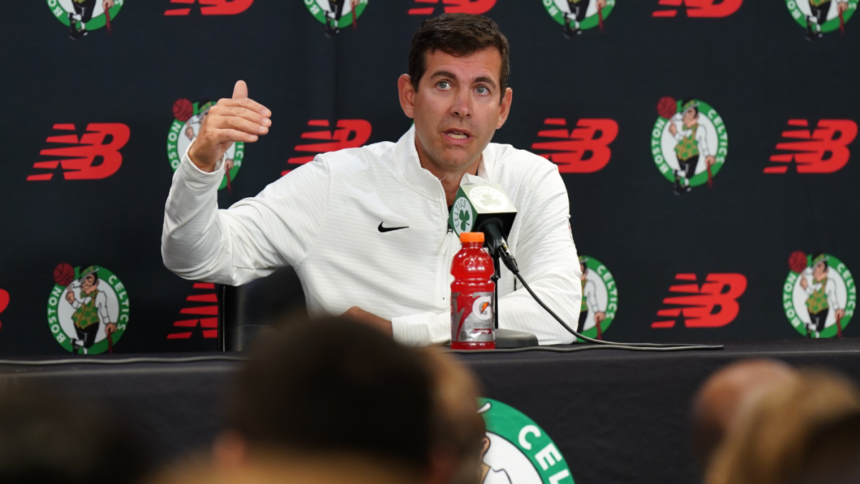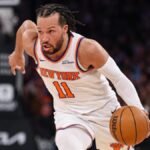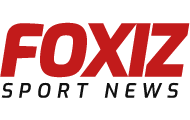Over the summer, I ranked all 30 NBA head coaching jobs based on their desirability. The Dallas Mavericks ranked No. 5 because they had Luka Doncic and because Nico Harrison had, in my own words, “solidified himself as a strong general manager by drafting Dereck Lively and trading for P.J. Washington and Daniel Gafford.” Needless to say… a lot has changed since then!
The 2024 offseason was relatively quiet. Few teams seemed prepared to deal with the onslaught of restricting salary cap rules that took effect following the 2023 Collective Bargaining Agreement. The 2025 trade deadline, though, was another matter entirely. Nine different All-Stars changed teams. Almost everyone got in on the action in some way, shape or form. And our opinions on the people making all of these moves therefore deserve to be re-evaluated.
So today, we’re going to be ranking all 30 NBA front offices. These rankings are all-inclusive, so general managers, scouts, cap managers and even owners will be evaluated as a whole. While there is no set rubric, the following factors will be considered:
- Does their general manager have a successful track record? This is probably the single most important factor we’ll measure. The more winning an executive has done, the more latitude they get for recent missteps or a losing record. Keep in mind that the lead basketball decision-maker is the single figure most responsible for these rankings. Even if a team has a successful track record, they’re going to lose credit if the general manager currently in place was not at the helm for that success.
- Is there a clear plan in place? This is relatively simple. While not every great front office has the same plan for building a championship roster, they all at least have one. Is their vision readily apparent? Have their recent moves taken them closer to that end goal?
- Is their team winning? This isn’t an absolute, as the first two points covered, but having a good team today certainly helps.
- Is their owner willing to spend enough money to win consistently?
- Is their owner heavily involved in basketball decisions? If the answer is yes, is there a reason to believe that owner’s voice in basketball matters is at all helpful?
- Is it readily apparent who is making major basketball decisions? Most successful front offices have a single lead executive who has final say on basketball matters. If a team does not, is there reason to believe that their alternative structure is at all helpful?
- Has this front office done a good job hiring head coaches? Does this front office collaborate with its head coaches effectively?
- How have circumstances impacted their outcomes? Has a team made good decisions that have been doomed by poor health? Has a team benefitted from or been hurt by its market or history?
- Does this front office tend to draft well in terms of where it picks?
- Does this front office tend to sign players to contracts that represent good value relative to the market?
- Does this front office tend to win its trades?
- Is this front office notably creative in how it acquires or retains players?
- Is everyone in the organization properly aligned towards the goal of meaningfully competing for a championship, either now or in the future? This thankfully only applies to a small number of teams, but no front office is going to rank well if it appears comfortable winning 45 games in perpetuity.
Essentially, if you were tasked with setting up an expansion team tomorrow and knew nothing of its market or other circumstances, which of the 30 existing front offices would you most trust to put together a winner?
Two quick notes before we begin. First, I want to stress that there are far more good front offices than bad ones in the modern NBA. Do not treat a low ranking as an absolute indictment of a front office. A lot of this is circumstantial and will be explained in more depth. Where an indictment is warranted, one will be provided. Second, I will be grouping these front offices by tiers. While all 30 teams will be ranked 1-30, there is no great difference in quality between any two teams in the same tier. Teams within a tier could plausibly be ordered in any way based on preference. So, with that in mind, let’s rank some front offices.
Tier 1: Nearly Perfect
1. Oklahoma City Thunder
No team this century has ever been better-positioned to compete for a sustained period than the Thunder. They’ve done virtually everything right since losing the Western Conference finals and Kevin Durant in 2016. Case-in-point: they traded Serge Ibaka on draft night of 2016 for Victor Oladipo and Domantas Sabonis. A year later, they traded those two for Paul George, and then George for Shai Gilgeous-Alexander and a mountain of draft picks, one of which yielded Jalen Williams. They tanked for two years. One of them netted Chet Holmgren. Josh Giddey wasn’t nearly as good, but they at least realized that quickly enough to trade him for Alex Caruso.
There’s not a nit to pick here. Mark Daigneault just won Coach of the Year. Their ownership stays out of Sam Presti’s way, but was willing to pay exorbitant luxury-tax bills during the Russell Westbrook-Paul George era. They consistently re-sign their own youngsters to long-term, team-friendly deals. The quartet of Lu Dort, Aaron Wiggins, Kenrich Williams and Isaiah Joe, all on extensions, will earn less over the next two years than Zach LaVine, Bradley Beal or Lauri Markkanen. Their lone significant foray into free agency got them Isaiah Hartenstein on a deal that comes with a team option right when Holmgren and Williams get expensive. They’ve drafted well at virtually every stage, and the picks they’ve hoarded give them the tools to replace their role players once they get expensive (or perhaps trade into a bigger piece if the need arises). Once they win a championship, they’ll be in a tier by themselves.
2. Boston Celtics
No GM in basketball better understands his roster at any given time than Brad Stevens does. He understood how Derrick White would fit on his team before the rest of the league had any idea how good he was. Years of watching his offense disappear against Miami led him to Kristaps Porzingis, one of the most defense-proof big men in basketball. There’s no “stopping” a 7-foot-2 center, and Boston’s league-record offensive rating a season ago is proof of that. He brought back Al Horford when Philadelphia discarded him and sure enough, he was the same Al Horford he’d always been. He even knew when it was time to trade Marcus Smart, the supposed heart and soul of the team, so Jayson Tatum and Jaylen Brown would be forced to take on a bigger role in the locker room.
Stevens is the rare executive with a coach’s understanding of how players can interact with and enhance one another, but a general manager’s grasp on long-term roster management. Holes don’t fester in Boston. Stevens fixes them before they grow too glaring. Yet Boston’s balance sheet is exceptionally well-managed. Payton Pritchard might win Sixth Man of the Year as the 193rd highest-paid player in the NBA… and Stevens has him locked in at roughly that price for three more years. In basketball terms, at least, both Ime Udoka and Joe Mazzulla look like strong coaching hires.
Uncertainty at the top is the only true concern here. Wyc Grousbeck is selling the team and we don’t know who’s buying it. We’ve also never seen Stevens build a team from the ground up. Even if he developed Tatum and Brown as their coach, he didn’t draft them. But vice president of basketball operations Mike Zarren, lauded for his cap management, statistical expertise and just about everything else, is perhaps the most overqualified deputy in basketball and has been a mainstay in Boston for two decades. If the Celtics needed to start a rebuild in the near future for any reason, they’d be doing so in excellent hands.
3. San Antonio Spurs
Luck obviously played a role in getting Victor Wembanyama to San Antonio, but we’re talking about the Spurs here. The brain trust behind the five championships that preceded Wembanyama (who was lost for the season this week) is still in the building, and their recent performance leaves little doubt that the Spurs remain among the NBA’s very best organizations. In July, they managed to extract an unprotected pick swap from the Sacramento Kings merely for serving as a cap facilitator in their acquisition of DeMar DeRozan. Six months later, the Spurs managed to trade for Sacramento’s best player without giving that swap back. That’s how well trading has gone for them lately. The Dejounte Murray and Jakob Poeltl trades also represented enormous value wins even in the moment.
Three ripple effects of Victor Wembanyama injury: How season-ending diagnosis impacts Spurs, DPOY race, more
Sam Quinn
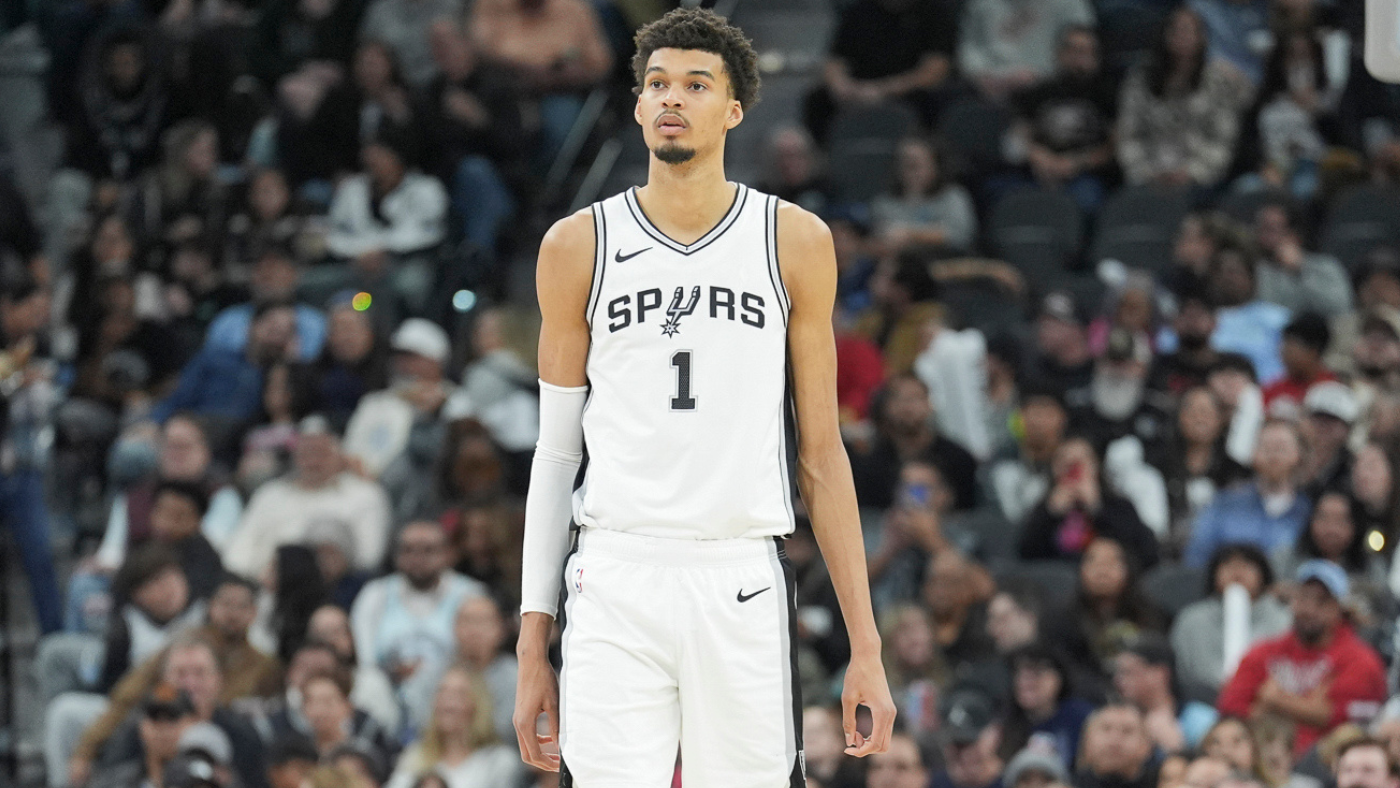
Stephon Castle at No. 4 and Devin Vassell at No. 11 represent clearly successful lottery picks. Jeremy Sochan has a chance to be as well, though his fit on a roster with limited shooting remains iffy. That’s the major question mark here. San Antonio’s talent acquisition has been stellar lately, but it has been almost a decade since they’ve needed to actively shape that talent into a coherent, contending roster. Landing De’Aaron Fox was the first major step in that direction, and it was a good one, but balancing out the roster in the years to come will be essential. Fortunately, the Spurs are loaded with draft picks even after the Fox trade, and their books are still clean enough for another major acquisition if they want one. They’ve navigated the early build around Wembanyama flawlessly, so there’s not much of a reason to bet against the Spurs now.
Tier 2: We trust the track record, but…
4. Miami Heat
The Heat have had a real argument for the No. 1 spot on these sorts of lists for 30 years. Even their recent history is nearly bulletproof. This is one of only two teams to play in multiple NBA Finals in the 2020s. Their two All-Stars were drafted at No. 13 overall (Tyler Herro) and No. 14 overall (Bam Adebayo). There’s a real chance that they add a No. 15 overall All-Star (promising center Kel’El Ware) to that list in the near future. No team has had more success with undrafted free agents. Andy Elisburg is one of the most revered capologists in basketball. Mickey Arison may not spend at Joe Lacob’s level, but money has rarely been an issue for the Heat, and he stays out of Pat Riley’s way.
But the last few years have raised some reasonable questions. It may never be clear how close they actually came to landing Damian Lillard, but missing on an All-NBA player that wants to play for you rarely looks good. Far more concerning is just about everything that came with Jimmy Butler’s exit. Riley’s end-of-season press conference last spring made it clear that the Heat were not planning to extend him. That they didn’t realize what sort of damage that would do to their relationship with him was pretty damning. They likely would have secured a far greater return by simply trading him over the summer. It’s not as though keeping him gave them a real shot at returning to the Finals, either. Last year’s team was far away from contending. The notion of keeping Butler and publicly challenging him to earn an extension was pretty old-fashioned, like much of what Riley does and much of what encompasses Heat Culture. Does that sort of approach still make sense in 2025?
The answer is… maybe? And even if the answer is no, it’s not as though old dogs can’t learn new tricks. Consider Gregg Popovich. He presided over two decades of peace in San Antonio. Within two years of Tim Duncan’s retirement, Kawhi Leonard and LaMarcus Aldridge both asked for trades. The Spurs have since righted the ship. There is perhaps more collective basketball genius in Miami than in any other organization in the NBA. Nobody ever leaves the Heat front office. If they need to adjust they can do so. But given the way the Butler and Lillard situations played out, they have to be dinged if only slightly.
Tier 3: Keep up the great work
5. Utah Jazz
Some will argue this ranking is too high for a team that’s spent the last three years in the lottery, but Danny Ainge built a champion and perpetual contender in Boston, and Justin Zanik helped build Utah’s recent pseudo-contenders. Losing is a choice for them. They’ll start winning when it makes sense for them to start winning. Until then, they’re making the most of losing.
The Rudy Gobert and Donovan Mitchell trades were both home runs. They traded two All-Stars for one All-Star, two starters, seven first-round picks and a handful of swaps. Unless you’re getting Shai Gilgeous-Alexander, it’s almost impossible to do better than that. Will Hardy hasn’t been given the tools he needs to succeed yet, but he’s made so much lemonade out of the lemons his front office has given him that Ainge needed to sell off veterans at consecutive deadlines just to protect his draft pick. If there’s a real quibble here, it’s with Utah’s drafting. Cody Williams has been a bust thus far, and Taylor Hendricks hadn’t proven much before his injury. Still, this is the GM who drafted Jayson Tatum and Jaylen Brown. Trust the track record. Virtually every move this front office has made has been in service of perhaps the NBA’s slowest rebuild, but that rebuild is in great shape. Ainge and Zanik have the tools they’ll need to build a winner, and their histories suggest that they’ll do so.
6. Memphis Grizzlies
The Grizzlies might be the best drafters in the NBA. They landed Desmond Bane and Santi Aldama at No. 30 in consecutive drafts. They just got Jaylen Wells at No. 39. When you throw in Brandon Clarke at No. 21, four of the seven most-used players on the Western Conference’s No. 2 seed were drafted and developed outside of the top 20. That doesn’t even account for the players they stashed and developed in the G-League like GG Jackson, Vince Williams and Scotty Pippen Jr. The Grizzlies have replaced the Heat as the team best able to identify talent that other teams have missed on, and they’ve been pioneers when it comes to signing those players to team-friendly deals early on.
Of course, they’ve mostly gotten the obvious stuff right. Ja Morant and Jaren Jackson Jr. have panned out as stars drafted in the top five. While they haven’t been able to actually land a veteran star to pair with them, it hasn’t been for lack of trying. They’ve been linked to everyone from Mikal Bridges to Kevin Durant in recent years, and with control of their future draft capital, they’re eventually going to get someone. The only real miss they’ve had has been in the perpetual search for a big wing defender. Marcus Smart was a swing and miss. So was Justise Winslow. The trade up for Ziaire Williams is especially painful having seen what Trey Murphy, whom the Pelicans took with the pick they got from Memphis in that trade, has become. For whatever reason this has been a blind spot. Otherwise, the Grizzlies get almost everything right.
Grizzlies GM shuts down Ja Morant trade rumors: ‘I’m not going to give this nonsense further oxygen’
Jasmyn Wimbish
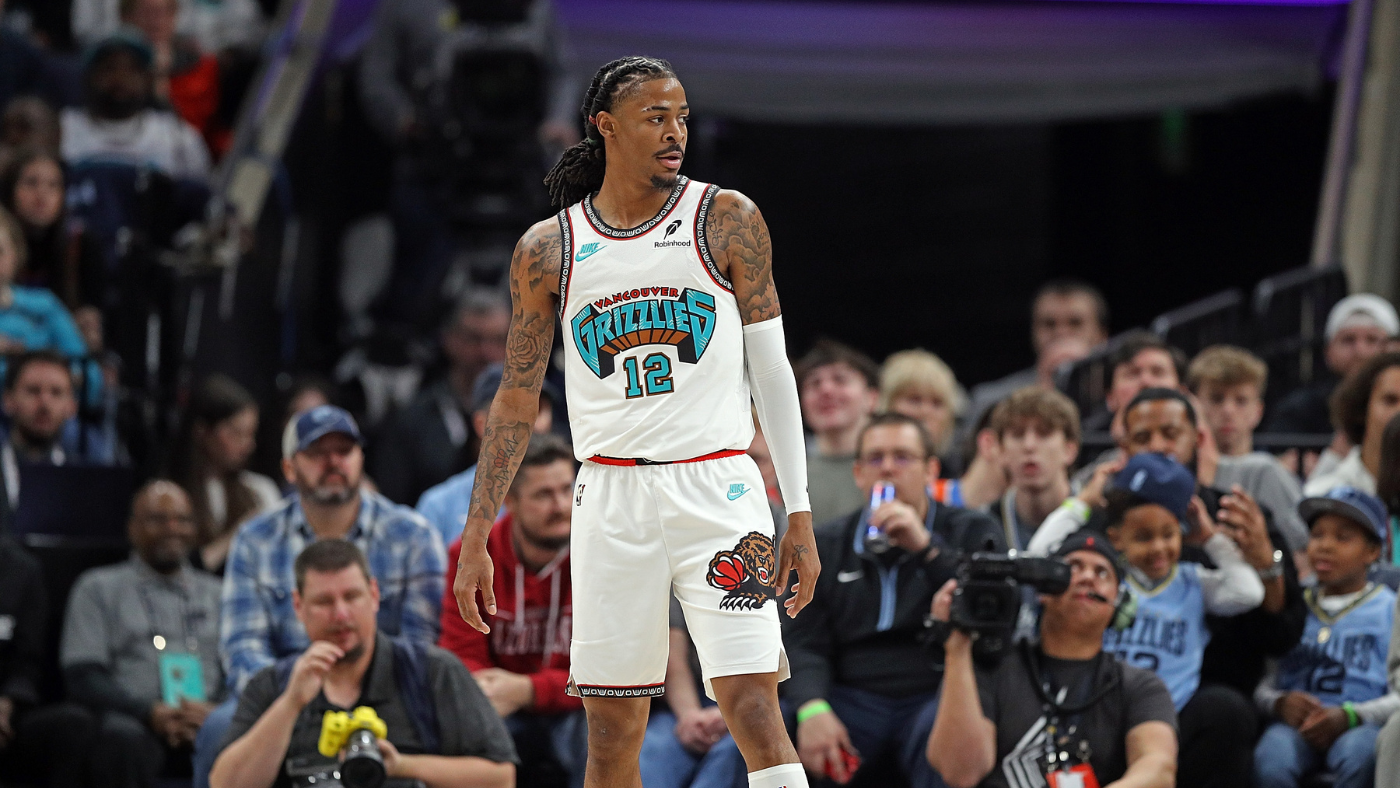
7. Cleveland Cavaliers
Memphis reached this tier largely by drafting. Cleveland has done a little bit of everything. Drafting Darius Garland with Collin Sexton already at his position was by no means a slam dunk. Koby Altman did it, and it has worked out beautifully. The Donovan Mitchell trade was a brilliant read of the market. He saw a rare opportunity to snag the sort of talent that isn’t usually available to markets like Cleveland on a multi-year deal, did it, and bet on himself to sell Mitchell on a future with the Cavaliers. That bet paid off over the summer. How he managed to sneak into the James Harden trade and steal Jarrett Allen for a bad first-round pick remains a mystery. Drafting Evan Mobley was obvious, but everything else was bold and creative, and perhaps most importantly of all, he tuned out all of the noise about how Cleveland needed to break up either its star backcourt or its pair of non-shooting big men. That decision has proven wise this season.
His work on the margins has been critical in making that unusual star foursome viable. He turned an undrafted Dean Wade into one of the most important role players in the NBA. Ty Jerome has gone from journeyman to Sixth Man of the Year candidate in Cleveland. He seemingly pulled Max Strus and De’Andre Hunter out of thin air, and the Kenny Atkinson hire, even if it was heavily influenced by ownership, has been exactly what this team has needed. The only reason Cleveland isn’t higher on this list is its lack of meaningful playoff success with this group. That is probably coming this spring, so don’t be surprised if the Cavaliers make it into the top five of future editions.
8. New York Knicks
The Leon Rose-led front office in New York built a winner from scratch without tanking or adding a no-brainer MVP candidate. They have instead won largely by identifying undervalued talent. Neither Jalen Brunson nor Julius Randle had ever made an All-Star Team before arriving in New York. Both grew into All-NBA players as Knicks, and even if Randle’s glow up was a bit of a mirage, the Knicks managed to flip him into a truer All-Star in Karl-Anthony Towns. Josh Hart, Donte DiVincenzo and Isaiah Hartenstein didn’t quite reach star levels, but the same basic principle applied: the Knicks saw established NBA players who were capable of more than they had shown with their previous teams. While they have not been able to keep all of these players, they’ve done a masterful job of structuring the contracts they’ve given to the ones they have. The Knicks sign almost everyone to descending-value contracts, which is a serious weapon against CBA-related restrictions that also generates meaningful extra trade value. Thank cap guru Brock Aller for that strategy.
The Knicks spent years hoarding assets preparing to make their star move. They ultimately split those assets across two players: Karl-Anthony Towns and Mikal Bridges. The Bridges deal, in a vacuum, was probably an overpay. The Towns deal was not, but it comes attached to a supermax contract. The overall picture makes sense. Ultimately, though, this front office is going to be judged on whether or not those additions prove to be the correct ones. After all, the Knicks are attractive enough to recruit almost any star that becomes available. If Towns and Bridges can take the Knicks to the Finals in the next few years, it would be hard to argue against New York as a top-five front office. If they miss out on, say, Giannis Antetokounmpo or another player of that ilk, well, the Towns and Bridges moves will merit a bit more scrutiny. Ultimately, though, the Knicks check practically every box. They draft well, develop well, sign good contracts and have a front office, coaching staff and roster that is in perfect sync with one another.
9. Houston Rockets
The Rockets aren’t the Thunder because they don’t have their version of Gilgeous-Alexander. Otherwise, they’ve executed a pretty similar rebuild by turning holdover stars from a previous era (in their case James Harden) into a trove of draft assets that will eventually lead to a sustainable contender. The draft track record isn’t perfect. Jalen Green over Evan Mobley was a miss, and thus far, Reed Sheppard hasn’t proven he can even play in the NBA. But there are plenty of hits here too. Amen Thompson is a budding star at No. 4, and the trade up for Alperen Sengun has worked out wonderfully. They’ve amassed this young talent despite being relatively unlucky on lottery nights. Their draft position was worse than their place in the standings in all three years of their all-out tank. The whole world thought Paolo Banchero was falling to them in 2022 before the Magic surprised the world by taking him. That left Houston with Jabari Smith.
They’ve managed the jump into winning with the proper prudence. Both the Fred VanVleet and Dillon Brooks contracts have worked out well, and both were structured in relatively team-friendly manners: VanVleet’s includes a team option, while Brooks’ contract descends in annual value. They’ve thus far elected not to make a major trade for a veteran yet, and that’s probably the right decision. It never hurts to see your young core in a playoff run first. That’s what Presti did a year ago. Ime Udoka was the perfect coaching hire for this team, giving them the defensive personality that they so often lacked during the Harden years. Rafael Stone has also proven to be one of the most creative traders in the NBA. In 2021, for instance, he wanted control of Milwaukee’s unprotected 2023 first-round pick in a trade for P.J. Tucker. The Bucks couldn’t send it out because of the Stepien Rule, but Houston happened to control Milwaukee’s 2022 first-round pick. That allowed them to sidestep the Stepien Rule by swapping both in the deal. Stone’s trade history is littered with creative flourishes like that, and they almost always wind up benefitting the Rockets. They have the youth, assets and identity needed to develop into a long-term Western Conference power.
Tier 4: Smart but unlucky
10. Philadelphia 76ers
Let’s get this out of the way: the max contract Philadelphia handed out to Paul George a summer ago looks bad right now. So does the supermax extension for Joel Embiid. It’s too early to write either off entirely, but those contracts have the potential to become real problems for Philadelphia moving forward.
They represent Daryl Morey’s super power and his kryptonite at the same time. No general manager more aggressively pursues star-level talent. Every move he makes is centered around that pursuit, and even when it goes wrong, it’s the right idea. You win, first and foremost, with superstars. It’s typically better to bet on such talents and miss than meander your way through .500 seasons hoping that better options fall out of the sky. This is Daryl Morey’s 18th season as a general manager and it’s going to be his first ever finishing below .500. He’s consistently built winners in non-premium markets without tanking. He deserves the benefit of the doubt.
76ers’ Joel Embiid admits he’s struggling with knee injury, must ‘fix the problem’ to get back to old form
Colin Ward-Henninger
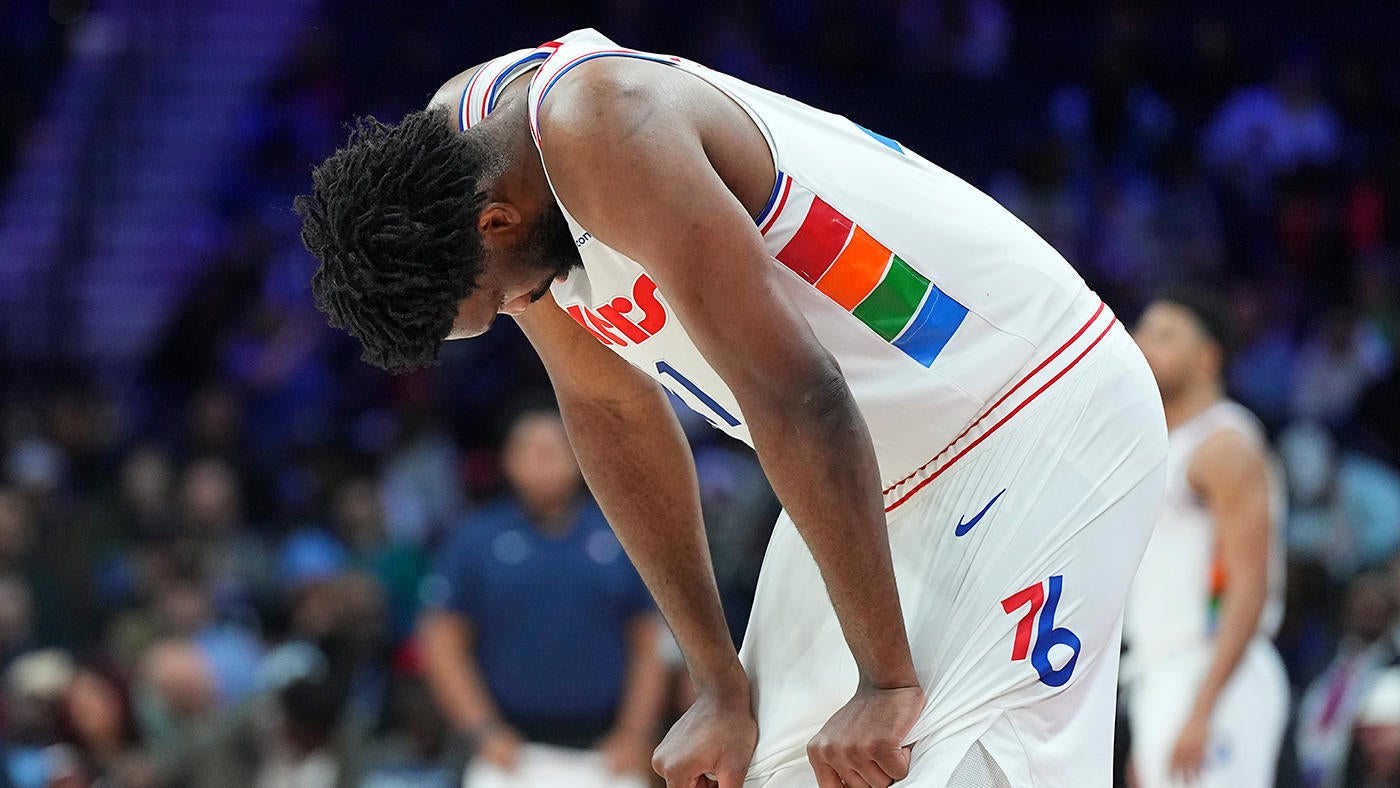
And even if he got those two contracts wrong, he’s gotten a lot of other things right. How many sitting general managers have drafted an All-Star at No. 21? Morey did with Tyrese Maxey. Jared McCain at No. 16 this year looked like another major draft win before an injury ended his season, and the undrafted Justin Edwards is at the very least a viable rotation player. Guerschon Yabusele for the minimum has been such a great signing that Morey had to clear out salary for next season just to create the space to hopefully re-sign him. So yes, criticism for the George and Embiid contracts are fair. Morey took a calculated risk on injury-prone stars that thus far has not panned out. But the process behind those risks was sound and he’s done such a good job with almost all of his other moves across nearly two decades that he should be trusted to figure this out before it’s too late.
11. Los Angeles Clippers
If you knew how good Gilgeous-Alexander was going to become in 2019, well, congratulations. I certainly didn’t. The decision to trade the farm to unite Kawhi Leonard and Paul George didn’t work out, but it made absolute sense at the time. When you can trade your way into becoming the championship favorite, you do it. The Clippers were good enough to win a championship. They just didn’t stay healthy enough to do so.
They seemed to realize that when they allowed George to walk over the summer. I criticized that decision. It’s panned out beautifully, leaving the Clippers far deeper on the court and financially flexible off of it. They probably aren’t championship contenders at the moment even with a healthy Kawhi, but it’s worth noting that they didn’t tank to build the Leonard-George team anyway. The philosophy that they’ve seemingly landed on is remaining competitive in the short-term as a way to entice a future star to force his way to them as Leonard once did in the longer-term.
When you have one of the NBA’s best coaches and an owner with infinite wealth, that plan makes sense. So sure, lacking control over any of their first-round picks between now and 2029 is certainly precarious. From that perspective I do still question the James Harden trade, as it sacrificed a lot of long-term upside for an obvious championship window that last less than a year. But this is a front office that has proven to be quite adaptable and unorthodox. When the chance to set themselves up for the longer-term presents itself, I’m betting they jump on it.
12. Brooklyn Nets
If Kevin Durant’s foot was a size or two smaller, the Nets probably would have won a championship in 2021. If New York doesn’t institute a vaccine mandate, the Nets might have won a championship in 2022. Play out the last five years 10 times and in a few of them, the Nets likely build a mini dynasty. If you’re going to blame Sean Marks for how the Durant era ended, then give him credit for it happening in the first place. He took over the worst team in the NBA with no control over its draft picks and turned it into a championship favorite in less than five years.
He’s also done a pretty nice job of picking up the pieces in the aftermath. Jordi Fernandez was a great coaching hire even if he’s helped them win more games than they would have liked this season. They’ve consistently found good role players late in the draft: Caris LeVert at No. 20, Jarrett Allen at No. 22 and Nic Claxton at No. 31 stand out. Their owner is perfectly willing to pay the luxury tax. It’s going to take time to rebuild this thing, but Marks now has a boatload of future draft picks to work with. We’ve seen what he can build without that sort of head start, so the future looks pretty bright in Brooklyn.
13. New Orleans Pelicans
Between Nov. 28, 2023 and March 20, 2024, the Pelicans went 33-17 and were just a hair below the Thunder for the second-best net rating in the NBA. That might seem like an arbitrary time period, but it represents basically the only sustained stretch in which the Pelicans have been mostly healthy since David Griffin got this job. He has largely constructed good rosters in New Orleans that just keep getting hurt.
The Pelicans are up there among the very best drafters in the NBA. Trey Murphy is a budding star at No. 17. Herb Jones at No. 35 is one of the very best 3-and-D wings in basketball. Jose Alvarado was undrafted. Yves Missi looks like a great pick at No. 21 overall. Dyson Daniels might be the best perimeter defender in the NBA, and even if he’s currently a Hawk, the Pelicans did pick him. David Griffin built a champion in Cleveland. He’s found plenty of talent in New Orleans, too. It’s not his fault that talent hasn’t been able to stay on the floor.
He’s going to have to shape all of that talent into a coherent and durable roster relatively soon, though, and he’s facing challenges that extend beyond those injuries. Most notably, there’s really no evidence suggesting that this New Orleans ownership is ever going to be comfortable paying the luxury tax. That is a significant hindrance. The basketball staff in New Orleans deserves more credit than it gets, but if you want to ding the Pelicans for questionable ownership and their uninspiring track record, it would be hard to blame you.
Tier 5: Don’t rest on your laurels
14. Golden State Warriors
How much brain drain can a great front office endure? A lot of the key figures that built Golden State’s dynasty are no longer with the team. Bob Myers is on ESPN now. Jerry West left for the Clippers in 2017. Travis Schlenk, one of the executives who advocated for drafting Draymond Green, left for a GM job in Atlanta that he has since lost. Several key assistant coaches such as Luke Walton, Mike Brown and Kenny Atkinson have taken head coaching jobs elsewhere. This tends to happen when an organization succeeds as much as the Warriors have. Keeping everyone together gets difficult.
The Warriors tend to be a more collaborative organization than most in the front office, and that approach has worked for them. It’s not as though everyone from the dynasty is gone. Mike Dunleavy and Kirk Lacob were both with the organization when championships were won, and Joe Lacob’s wallet remains critical even in the apron world we now live in. The Jimmy Butler trade looks like a success thus far, and Dunleavy has generally drafted well. Brandin Podziemski looked good enough as a rookie to get held out of trade talks over the summer, and though he’s regressed, he’s at least a useful role player. Trayce Jackson-Davis and Quinten Post are solid second-round choices. The signs are optimistic here, but there’s just not enough of a sample here to really judge the post-Myers Warriors. If Dunleavy can put the right pieces around the Butler-Green-Stephen Curry core in the next few years, it will be safe to assume that the Warriors are still lightyears ahead.
Six NBA game-changers who can alter fate of their team’s stretch run: Jimmy Butler, Luka Dončić, more
Colin Ward-Henninger
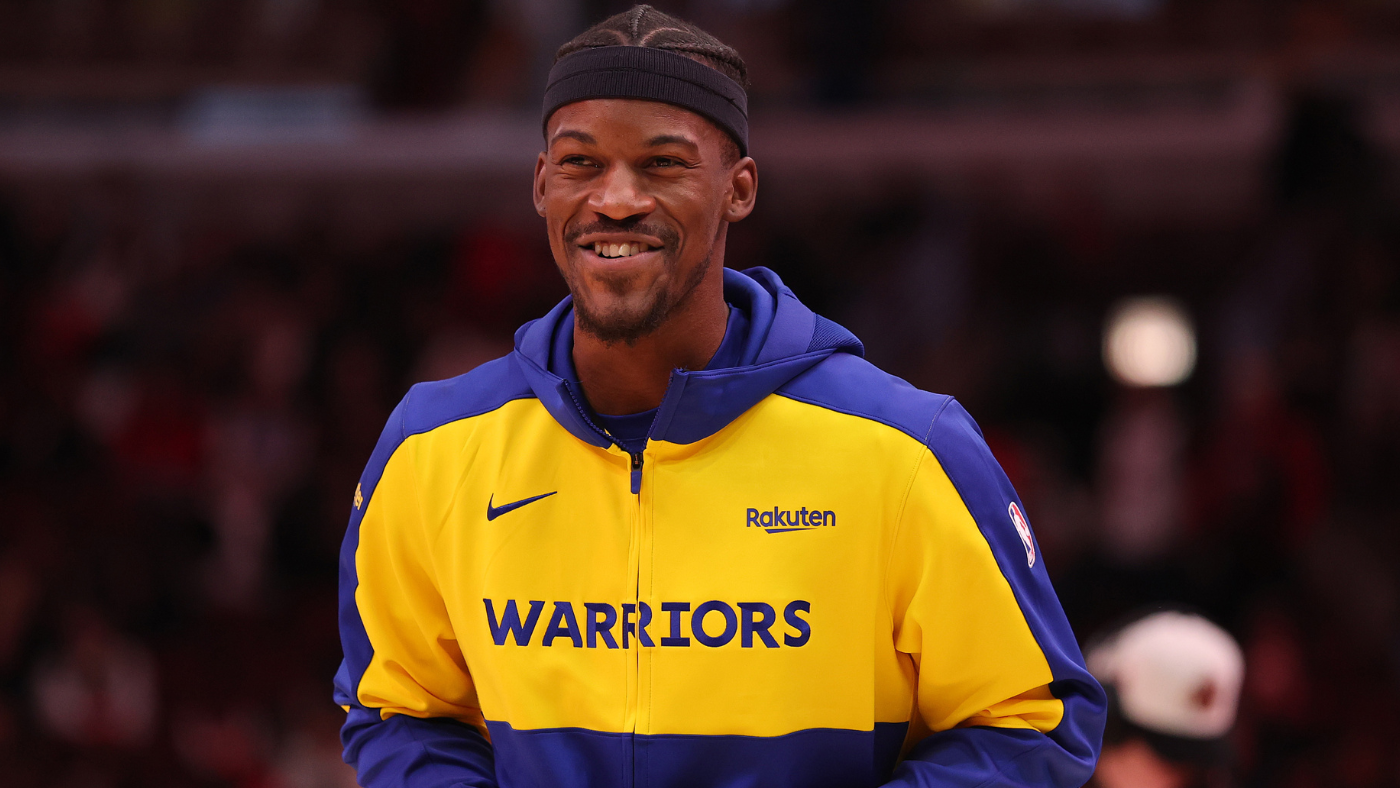
15. Toronto Raptors
Masai Ujiri built up a lot of credit when the Raptors were winning. He’s rapidly spending it on this unusual rebuild. Toronto’s overall vision here isn’t obvious. Letting Fred VanVleet walk for nothing was strange. So was trading OG Anunoby without getting a first-round pick back. There is no obvious future All-Star on the team, but they are nearly at the luxury tax next season thanks to the big contracts they’ve given to almost every notable veteran on the roster. A lot of Toronto’s future hinges on the lottery gods this spring. Toronto is in line to pick at No. 5 right now, and while this roster isn’t a clear long-term winner, it is too talented to pick that high again unless the Raptors endure another season as injury-riddled as this one. If there isn’t clarity on Toronto’s actual direction in the next year or so, the questions about Ujiri will start to get louder.
Ujiri’s scouting acumen is why he should still get the benefit of the doubt here. It’s easy to forget now, but drafting Scottie Barnes over Jalen Suggs was a somewhat surprising choice that has since worked out nicely. Nobody’s noticed yet, but Gradey Dick is growing into a very productive, well-rounded scorer, and Jamal Shead was a great find at No. 45. There are still real question marks here, but we’ll have a far better idea of what Ujiri is thinking once we’ve seen Brandon Ingram and their upcoming lottery pick play with the current core. If that doesn’t work out? Then we can start questioning the reputation Ujiri built last decade.
Tier 6: Fine, just fine
16. Orlando Magic
You can essentially separate this Orlando front office’s tenure into two distinct eras. The pre-Nikola Vučević trade period accomplished very little beyond a few first-round exits. The post-Nikola Vučević trade period has been far better. That deal netted Wendell Carter Jr. and the pick that would become Franz Wagner. While the Paolo Banchero draft pick looks obvious in hindsight, they were widely expected to draft Jabari Smith up until draft day. Clearly, they got that decision right. They’ve done a good job of signing veterans to front-loaded contracts that get smaller once their young players get paid. Jamahl Mosley was a strong coaching hire.
The overall concept here works. Orlando has built an identity around size, and before long, it is going to create a contender. The question here is when and if the Magic can balance that chosen identity with the reality of the needs it creates. The Magic have to find more shooting and they probably have to find a smaller, offense-centric guard to provide balance with all of those bigger players. Right now, this is more a collection of similarly skilled players than a viable, winning team. If the Magic can fix their offense without harming their defense, though, they are going to climb up these rankings.
17. Indiana Pacers
For years the Pacers were the NBA’s most risk-averse team. They’ve taken some big swings recently, though. The Pascal Siakam trade has thus far been an unmitigated success. The Tyrese Haliburton acquisition looked at one point like it could be an almost Luka Dončić-esque steal: a budding MVP candidate for an older, worse player. Haliburton’s health and inconsistency have kept the deal from turning into such a monster win, but the deal has still worked out well for Indiana. They’ve found good players in a variety of unconventional ways. Andrew Nembhard was a second-round pick. Aaron Nesmith was essentially cap fodder in the Malcolm Brogdon trade. More often than not, players that arrive in Indiana tend to play better than they were wherever they were before.
The question here is one of ambition. The Pacers are known as one of the NBA’s most frugal organizations. They’ve made aggressive moves recently, but have done so from fairly straightforward positions. They had two centers so they traded one. They had no forwards so got they one. Is Indiana going to be willing to pay the tax when the time comes to do so? If they continue to win 50ish games per year, are they going to be willing to risk that stable success for an upside move that might get them into the championship picture? Only time will tell. Historically, the Pacers have been plenty comfortable being good. The next step for them is getting to great.
Tier 6: The single hardest team to rank
19. Minnesota Timberwolves
Tim Connelly built the Nuggets, and that gave him a blank check to build the Timberwolves as he saw fit. How well has he used it? That’s a matter of debate. The Rudy Gobert trade is not the historic debacle it looked like two years ago nor the monumental triumph it seemed to be when Minnesota knocked Denver out of the 2024 playoffs. It’s somewhere in between, something like the Mikal Bridges deal: an obvious overpay that can be justified through a championship. They came close a year ago, but the opportunity cost here is potentially severe. They no longer have draft picks to trade for a long-term co-star for Anthony Edwards.
They traded the player who might have been that co-star in September. The Karl-Anthony Towns trade has been an undisputed disaster. There were reasonable financial motivators for the deal, but it ultimately deprived Minnesota of an All-Star starter and got them an ill-fitting replacement, an up-and-down bench scorer and a mediocre first-round pick. If Minnesota had the draft capital to benefit from that financial flexibility this might be another matter, but it doesn’t. Navigating Edwards’ prime without Towns or picks is going to be extraordinarily difficult.
And we don’t even know who will be helming that period. Marc Lore and Alex Rodriguez are set to assume ownership of the team. What kind of owners will they be? During the playoffs, ESPN reported that Lore and Rodriguez planned to duck the luxury tax if they had taken over before last offseason. Doing so would have been disastrous. Is Connelly going to stick around? He reportedly agreed to a restructured contract last offseason that will allow him to opt out after the season. Why hasn’t he committed long-term? There are just so many question marks here, so many ways that things can go wrong. The team was so good last season that fans could fairly push these concerns off. It isn’t this year. These next few seasons will determine if Edwards spends his career in Minnesota or looks elsewhere in the near future. It is very, very concerning that this period includes certainty at neither the GM nor owner positions.
Tier 7: They’re playing a different game
19. Los Angeles Lakers
They got LeBron James because he wanted to live in Los Angeles. Rich Paul engineered their acquisition of Anthony Davis. Nico Harrison handed them Luka Dončić on a silver platter. There are teams that have never had a single player that good. Laker history is the story of such players falling in their laps. Don’t judge them on their ability to acquire such players. Judge them on what they do once they have them.
And even that isn’t always easy. They built their 2020 championship team almost by accident, missing on Kawhi Leonard and signing the few free agents who remained, almost all of whom happened to be 3-and-D wings who fit cleanly. Despite getting handed that blueprint, they botched the next four years by prioritizing ball-handling and getting rid of their wings. The Russell Westbrook trade was an all-time disaster. Choosing Talen Horton-Tucker and Kendrick Nunn over Alex Caruso isn’t far off. These front office execs managed to pass off blame for those failures onto the head coaches they hired. We have to say “they” because it’s never quite clear who’s making decisions in Los Angeles. Rob Pelinka is nominally the general manager. Paul, by all accounts, held influence before the Doncic deal. Kurt and Linda Rambis are heavily involved. Magic Johnson was frustrated by Tim Harris, the head of the business side, butting in on basketball matters.
And yet, this team consistently pulls diamonds out of the rough. Caruso was undrafted. Austin Reaves was undrafted. Max Christie was a second-round pick. They drafted Josh Hart, Kyle Kuzma and Ivica Zubac between No. 27 and No. 32. Ownership might not flex this team’s considerable financial resources to the degree that Lacob or Ballmer do, but the Lakers are now paying the luxury tax for the fourth consecutive season. In any other city, this front office doesn’t land James or Davis or Dončić and might not have lasted long enough to make this list. If it fails Dončić as badly as it failed James and Davis after the championship, Pelinka at least isn’t getting another job. For now, though, there’s enough to like to at least stick them in the middle of the pack.
Tier 8: Off to a good start, but barely any track record
20. Detroit Pistons
21. Charlotte Hornets
22. Washington Wizards
All three of these teams have relatively new front offices, so we’re lumping them together. The Pistons get the top spot in the group because they’ve actually made tangible progress. The Malik Beasley addition and J.B. Bickerstaff hire has helped launched them into the playoff race. The Hornets and Wizards are still in the early phase of their rebuilds, but both have managed them well thus far. Both have prioritized acquiring draft picks and maintaining cap flexibility moving forward, good principles to start out with. The Hornets get the slight edge over the Wizards because of Ted Leonsis’ shaky history as an owner in Washington (and because, bizarrely, they allowed Kyle Kuzma to kill a potentially lucrative trade to Dallas at the 2024 deadline), but generally speaking, all three front offices here are off to fine starts.
Tier 9: Title winners with questionable methods
23. Milwaukee Bucks
Most of what the Bucks did leading up to the 2021 championship worked. Brook Lopez on a bargain deal? A bunch of picks for Jrue Holiday? P.J. Tucker at the 2021 deadline? All sound, win-now moves. Ever since then? It’s been bad. They gave up on a recovering Donte DiVincenzo far too early, turning him into a washed Serge Ibaka only to see DiVincenzo revive his career elsewhere. They’ve developed basically no youth in that time. Andre Jackson and A.J. Green are both roughly 20-minute role players, and there’s nothing in the cupboard after them. The early returns on Kyle Kuzma have been mixed to say the least. The Adrian Griffin hire was such a disaster that he was fired before his first All-Star break. Doc Rivers is 47-43 since replacing him.
They’ve done what they’ve had to do to get Giannis Antetokounmpo to re-sign, and it’s not as though Damian Lillard has been bad as a Buck. But given the age of the core players here and the limited remaining assets, it’s fair to call this an all-in season for Milwaukee, and 30-24 just doesn’t cut it under those circumstances. They have a grim future awaiting them, and ownership can’t be relied on to guide them through it. Milwaukee has an unusual ownership structure in which governorship rotates every five years. Former co-owner Marc Lasry recently sold his roughly 25% stake to Jimmy Haslam, the owner of the NFL’s Browns, a team that hasn’t exactly thrived under his leadership. That general manager Jon Horst seemingly flirted with the Pistons last offseason isn’t a great sign either. Banners fly forever, but the decisions that followed the 2021 championship have largely gone poorly.
24. Denver Nuggets
Remember, the heavy lifting in Denver was done by Connelly. Calvin Booth took over ahead of the 2022-23 championship campaign, and his first offseason went quite well. Kentavious Caldwell-Pope, Bruce Brown and Christian Braun were all important parts of their championship team. The Russell Westbrook signing this year has been far more helpful than most expected as well. It’s the overall vision so many have taken issue with.
Booth has emphasized youth in the middle of a championship window, and that may have cost Denver its chance to repeat a season ago. Braun has developed nicely, but Peyton Watson, Julian Strawther and other youngsters the Nuggets are relying on haven’t proven themselves as playoff-caliber contributors yet. It hasn’t helped that Booth has missed badly on his last two mid-level signings. Reggie Jackson needed to be dumped after a year, and Dario Saric is out of the rotation. Rumors of discord between Booth and head coach Michael Malone are concerning here, and so is ownership’s history of operating fairly cheaply. The core that Connelly built is still so strong that Denver remains in the championship mix, but Booth hasn’t done nearly enough to support that core since winning it all two seasons ago.
Tier 10: I have real questions
25. Portland Trail Blazers
Joe Cronin deserves credit for not folding in the Damian Lillard negotiations. The Heat seemingly didn’t offer what they considered a fair price, so Cronin waited for a deal he deemed acceptable. As I’ve written, I think the picks they got back from Milwaukee were enormously valuable. The issue I take with Portland has been its lukewarm approach to rebuilding since.
Why is Jerami Grant still on this roster? Or Robert Williams III? The Deni Avdija trade was defensible given his age and contract, but it made the Blazers better before they were really ready to improve. There just seems to be a reluctance here to fully accept the necessity of tanking. If the lottery were held tonight, Portland would hold the ninth-best odds. While it’s too early to make any absolute declarations about their youngsters, it isn’t currently clear that anyone on this roster is capable of being one of the three best players on a championship team. They have talent, but not a viable long-term core.
Building one should be the priority, and doing so would have come with the side benefit of turning veterans into assets. They exist in a conference with Victor Wembanyama, Shai Gilgeous-Alexander, Luka Dončić and Anthony Edwards. Unless they either get really lucky in a future lottery or someone on the current roster pops in a way they haven’t yet, they’re just in too much danger of rebuilding into a team that caps out at 45 or 50 wins rather than genuine contention.
26. Atlanta Hawks
The Hawks are incredibly difficult to rank because of the complicated power dynamics within their front office. The disastrous acquisition of Dejounte Murray, for instance, came at a time in which Travis Schlenk was nominally the general manager. However, The Athletic’s Sam Amick has since reported that Schlenk was wary of the price, but that Nick Ressler, the son of owner Tony Ressler, was a driving force behind the deal. Ressler obviously remains with the organization and seemingly wields power alongside Schlenk’s replacement at general manager, Landry Fields. A lot of the front office was shaken up around Schlenk’s 2022 departure, with experienced basketball evaluators often replaced by less proven executives that, according to Amick, have close ties to Ressler.
This group’s decision-making has improved over time. The return for Murray when they needed to trade him, which included Dyson Daniels and two first-round picks, was strong. Zaccharie Risacher has had a reasonably successful rookie season as a No. 1 overall pick in a bad draft. But the burden of proof here lies with the unorthodox front office, and thus far, they haven’t displayed a promising overall vision for the franchise moving forward. Their cost-cutting move to trade De’Andre Hunter for limited value at the deadline was disappointing, and it’s not even clear if Trae Young will remain in Atlanta for the long haul either. The Hawks haven’t hurt themselves to nearly the same degree some teams on this list have, but they have a long way to go.
Tier 11: I can’t defend what you’re doing
27. Dallas Mavericks
By now you’ve read everything you want to read about the basketball motivations behind the Luka Dončić trade. Maybe, if you squint hard enough, you could justify it from a win-now perspective. If they get perfect health from Anthony Davis and Kyrie Irving, if they find another high-level scorer, if they nail everything on the fringes, there is the slightest chance that they compete for a championship in the next few years. That doesn’t make it a smart trade, but it’s one you could explain it if you tried hard enough.
But the human element of the Dončić trade is what will lock Dallas into the bottom tier of these rankings so long as Nico Harrison remains employed by the team. He and Patrick Dumont have shown such a fundamental misunderstanding of why fans root for a basketball team that they simply cannot be trusted to serve as effective caretakers of an organization. They’re asking the city of Dallas to root for laundry instead of the human being who wore it. We freely use words like “asset” to describe players, and in many cases, though a bit unseemly, it’s an accurate description. It isn’t where someone like Dončić is involved. Those players are why we watch sports in the first place.
He was someone an entire region expected to have in their lives for decades, much like Dirk Nowitzki before him. Someone they believed in and fought for and attached their hopes to. This entire enterprise relies on players being able to inspire those emotions. Discarding one who does as callously as Dallas did is a cardinal sin. Nothing else this front office has done matters. Any success this organization achieves in the aftermath is going to ring hollow. No matter what happens from here on out, Nico Harrison will be the man who traded Luka Dončić, and no matter what that means on the basketball court, that will make him the wrong general manager for the people he’s supposed to building this team for.
28. Phoenix Suns
No organization in the NBA operates with less foresight than the Suns. That’s true in a macro sense, obviously. ESPN’s Kevin Arnovitz wrote a lengthy feature about how little stock general manager James Jones puts into the draft. But it’s evident on a micro level as well. They are the impulse shoppers of the NBA.
They went after Bradley Beal as a pure talent play, but didn’t stop to think that maybe uniting three players on max contracts that do not generate consistent rim pressure might yield diminishing offensive returns and hamstring their ability to field a decent defense. They traded one very valuable unprotected 2031 first-round pick to the Jazz for three very weak picks. At the time, it seemed as though the move was a precursor to a Jimmy Butler trade. It turned out, however, they had no follow-up move lined up. They just sacrificed a very valuable asset for… the theoretical flexibility to trade three worse assets separately? They didn’t even think to keep Kevin Durant informed when they discussed trading him at this deadline. That is a very basic star relationship fumble.
It doesn’t seem as though decisions are made with a three-year plan in mind, or even a three-month plan for that matter. One minute they’re aiming for a big three of Durant, Devin Booker and Jimmy Butler. The next, they’re prepared to give up Durant, the best player in that trio, to secure Butler? They’re currently on their third coach in three years with no signs of improvement. They control none of their own picks between now and 2031. Ryan Dunn is the only notable young player on the roster, but they somehow managed to give up Toumani Camara, who would eventually grow into the perfect young role player for this roster, as a throw-in when they shipped Deandre Ayton to Portland. It’s one thing to ruin your future by going all-in on the present. It’s another to botch the present by going all-in on the present. The Suns have done so, and that inspires little trust in their leadership moving forward.
29. Sacramento Kings
The resume sort of speaks for itself at this point, doesn’t it? One playoff berth in the past 18 seasons. A unanimous Coach of the Year fired less than two years later. Their best player traded because they knew he wouldn’t re-sign with them. That decision was not motivated by market. De’Aaron Fox landed in San Antonio, after all. It was because Fox knew he couldn’t compete for a championship in Sacramento. History suggests he was right.
The Fox situation might have been an opportunity for the Kings to look inward and perhaps re-evaluate their organizational priorities. Instead, they have proven so desperate to recapture the good vibes of the 2023 playoff berth that they rolled the dice on Zach LaVine’s very dangerous max contract to put together a roster whose ceiling is… maybe winning a single round? The Kings are built around a 28-year-old (Domantas Sabonis), a 29-year-old (LaVine) and a 35-year-old (DeMar DeRozan). The time to win is, emphatically, right now. Yet they don’t have a single 2025 All-Star and there are two playoff-caliber defenders on the entire roster. This is a team that caps out at 46 or 47 wins. That’s only something to aspire to when you’ve been in 17 of the past 18 lotteries, and we’re not giving the Kings credit for two decades of poor decision-making.
30. Chicago Bulls
The Kings aspire to 46 or 47 wins. The Bulls seemingly aspire to 36 or 37. They very nearly occupied their own tier on this list and were an obvious choice for No. 30. To understand why, let’s briefly go through some of the bullet points we covered up top to show all of the ways this organization is failing:
- Does the GM have a track record? No. The Bulls haven’t won a playoff series under Arturas Karnisovas.
- Does the GM have a plan? It certainly doesn’t seem like it. Karnisovas argued in a recent press conference that teams can win championships with nine or 10 very good players rather than two or three superstars. Aside from being mostly untrue historically, it is worth pointing out here that the Bulls do not have nine or 10 very good players, nor are they especially close to reaching that number.
- Does the front tend to make good trades? Well, they managed to trade Alex Caruso to Oklahoma City without getting a single first-round pick back, they basically kickstarted the Orlando rebuild with the Nikola Vucevic trade, and they recently gave away their best player in LaVine to regain control of a first-round pick that was already top-8 protected and therefore eminently keepable if they had been willing to tank for it properly. So I’m gonna go ahead and say no.
- Does the front office tend to sign good contracts? Patrick Williams is averaging 9.1 points per game on a $90 million deal right now, so this isn’t looking great either.
- Is ownership willing to spend enough to win? Despite operating in the NBA’s third-biggest market, the Bulls have paid the luxury tax only twice. Only six teams have spent less in total tax dollars, according to Spotrac.
Nico Harrison at least built a Finals team last season. Matt Ishbia deserves credit for his willingness to spend. The Kings have pathways to at least being reasonably competitive. But there’s just no argument whatsoever in favor of how the Bulls operate beyond consistently maximizing revenue and minimizing costs.


